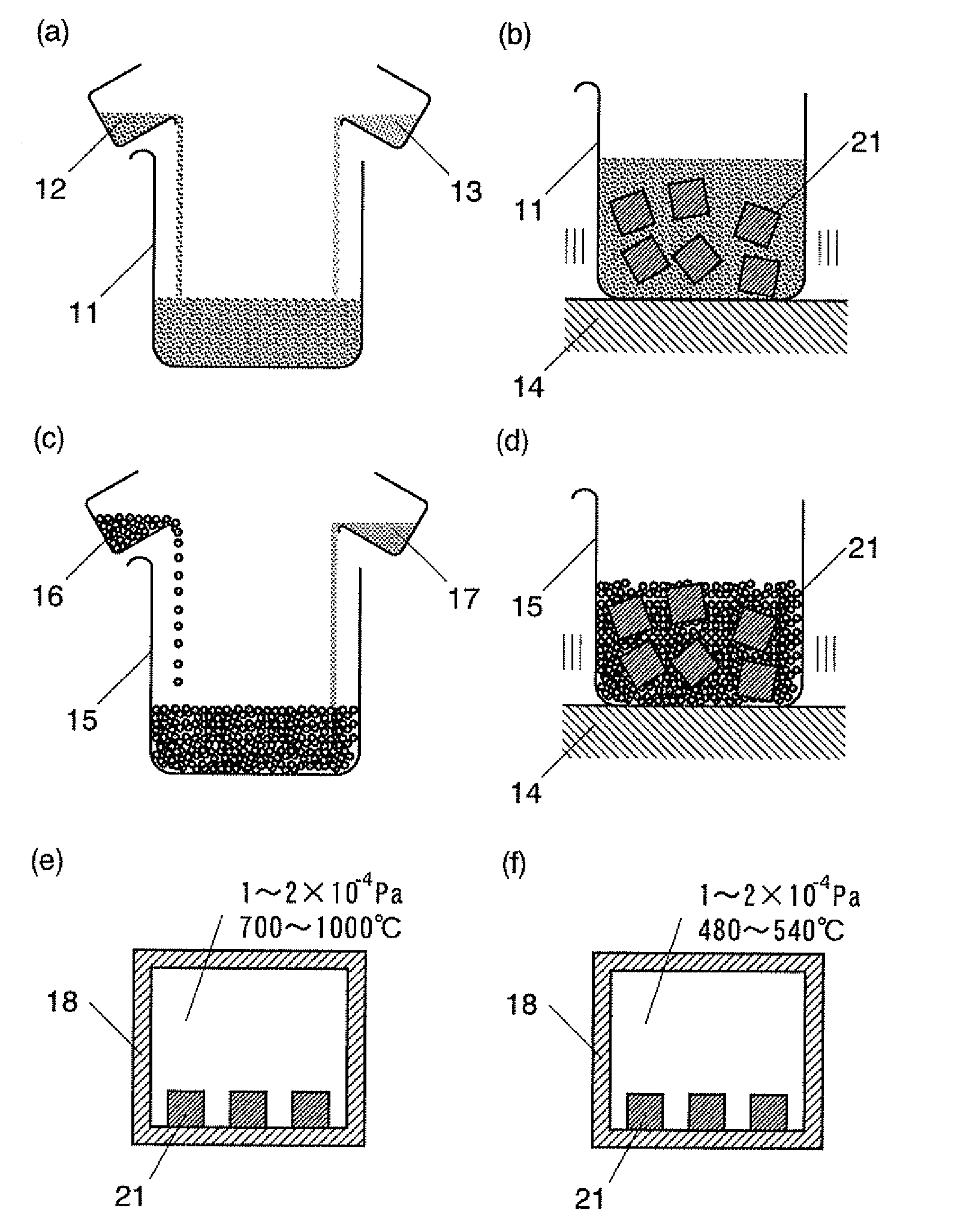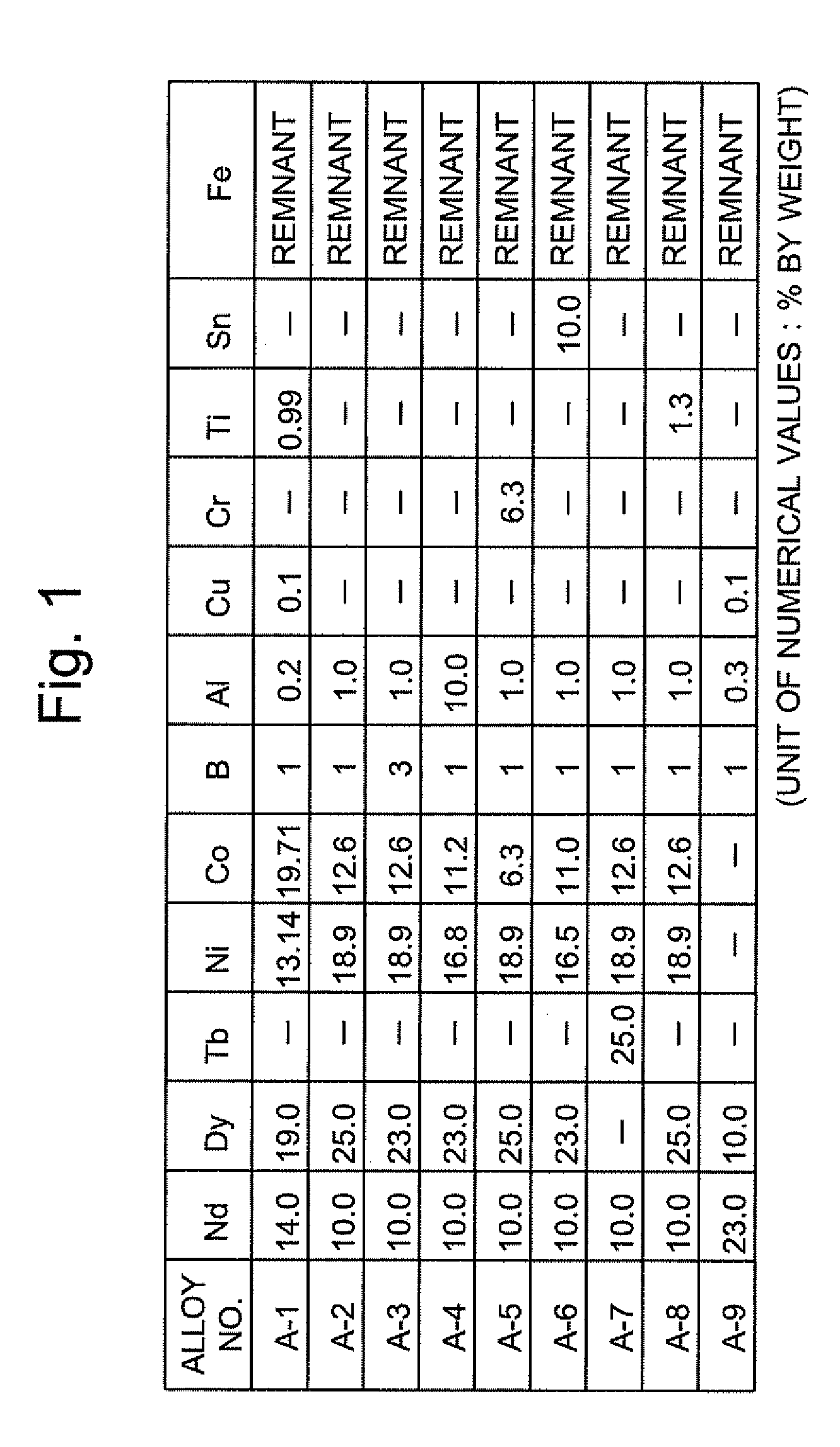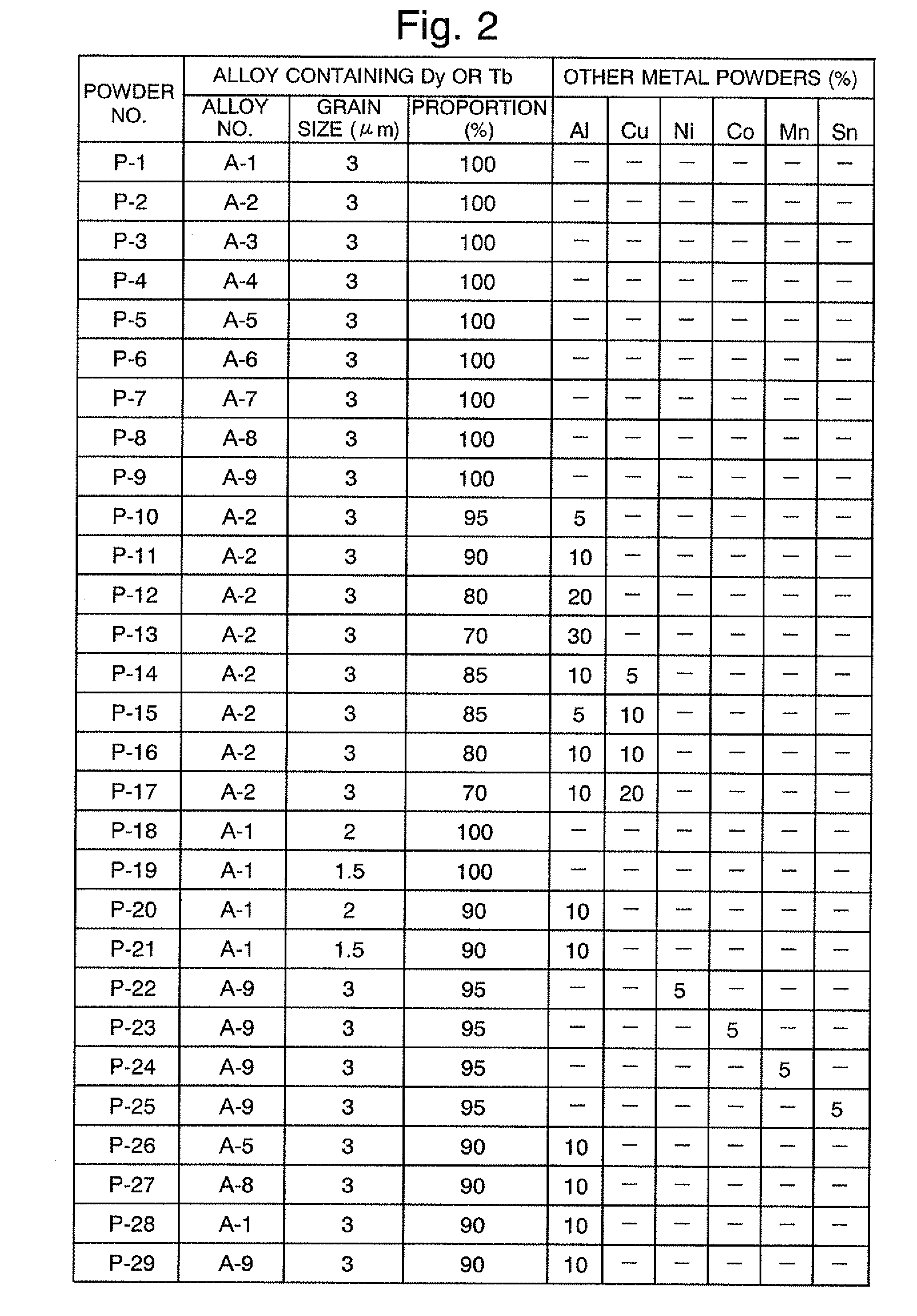METHOD FOR PRODUCING SINTERED NdFeB MAGNET
a technology of ndfeb magnet and ndfeb, which is applied in the direction of magnetic materials, magnetic bodies, coatings, etc., can solve the problems of increasing the price of the magnet, and difficult to industrially use sintered ndfeb magnets produced by this method, etc., to achieve sufficient anticorrosion effect, increase the coercivity, and improve the effect of magnetic characteristics
- Summary
- Abstract
- Description
- Claims
- Application Information
AI Technical Summary
Benefits of technology
Problems solved by technology
Method used
Image
Examples
first example
[0085]Eleven kinds of alloys shown in the table of FIG. 1, each containing Dy or Tb, were prepared by a strip-cast method. Each alloy was then subjected to hydrogen pulverization and jet-milling to obtain fine powders with average grain sizes of approximately 5 μm, 3 μm, 2 μm and 1.5 μm. The grain size was measured with a laser-type grain-size distribution measurement apparatus produced by Sympatec GmbH. The central value D50 of the grain size distribution was selected as the average grain size.
[0086]In addition to the fine powders of the alloys shown in the table of FIG. 1, fine powders prepared by mixing fine powders of Al, Cu, Ni, Co, Mn, Sn, Ag, Mo and W into the aforementioned powders were also used as the metal powders. The formulations and average grain sizes of these fine powders used in the experiment are shown in the table of FIG. 2.
[0087]The formation of a metal powdered layer containing Dy or Tb on the surface of the sintered NdFeB magnet and the grain boundary diffusion...
second example
[0104]A strip-cast alloy having the composition M-1 was ground by the same method as in the first example to obtain a powder with D50=5 μm. Similar to the first example, the fine-grinding process was performed under different conditions, i.e. by mixing 100 to 3000 ppm of oxygen into nitrogen in the jet-milling process in one case or using pure nitrogen in another case, to obtain three kinds of fine powders differing in oxygen content. These powders were molded by a transverse magnetic-field molding method and sintered at a temperature of 980° to 1050° C. to obtain sintered compacts. These sintered compacts are hereinafter referred to as R-7, R-8 and R-9. R-7 to R-9 were subject to the heat treatment as in the first example, and three rectangular solid samples measuring 7 mm×7 mm×4 mm (the direction of 4 mm coinciding with the magnetization direction) were prepared for each of the sintered compacts. The average values of the oxygen contents of R-7 to R-9 are shown in FIG. 12. A grain...
PUM
| Property | Measurement | Unit |
|---|---|---|
| Grain size | aaaaa | aaaaa |
| Fraction | aaaaa | aaaaa |
| Fraction | aaaaa | aaaaa |
Abstract
Description
Claims
Application Information
 Login to View More
Login to View More - R&D
- Intellectual Property
- Life Sciences
- Materials
- Tech Scout
- Unparalleled Data Quality
- Higher Quality Content
- 60% Fewer Hallucinations
Browse by: Latest US Patents, China's latest patents, Technical Efficacy Thesaurus, Application Domain, Technology Topic, Popular Technical Reports.
© 2025 PatSnap. All rights reserved.Legal|Privacy policy|Modern Slavery Act Transparency Statement|Sitemap|About US| Contact US: help@patsnap.com



